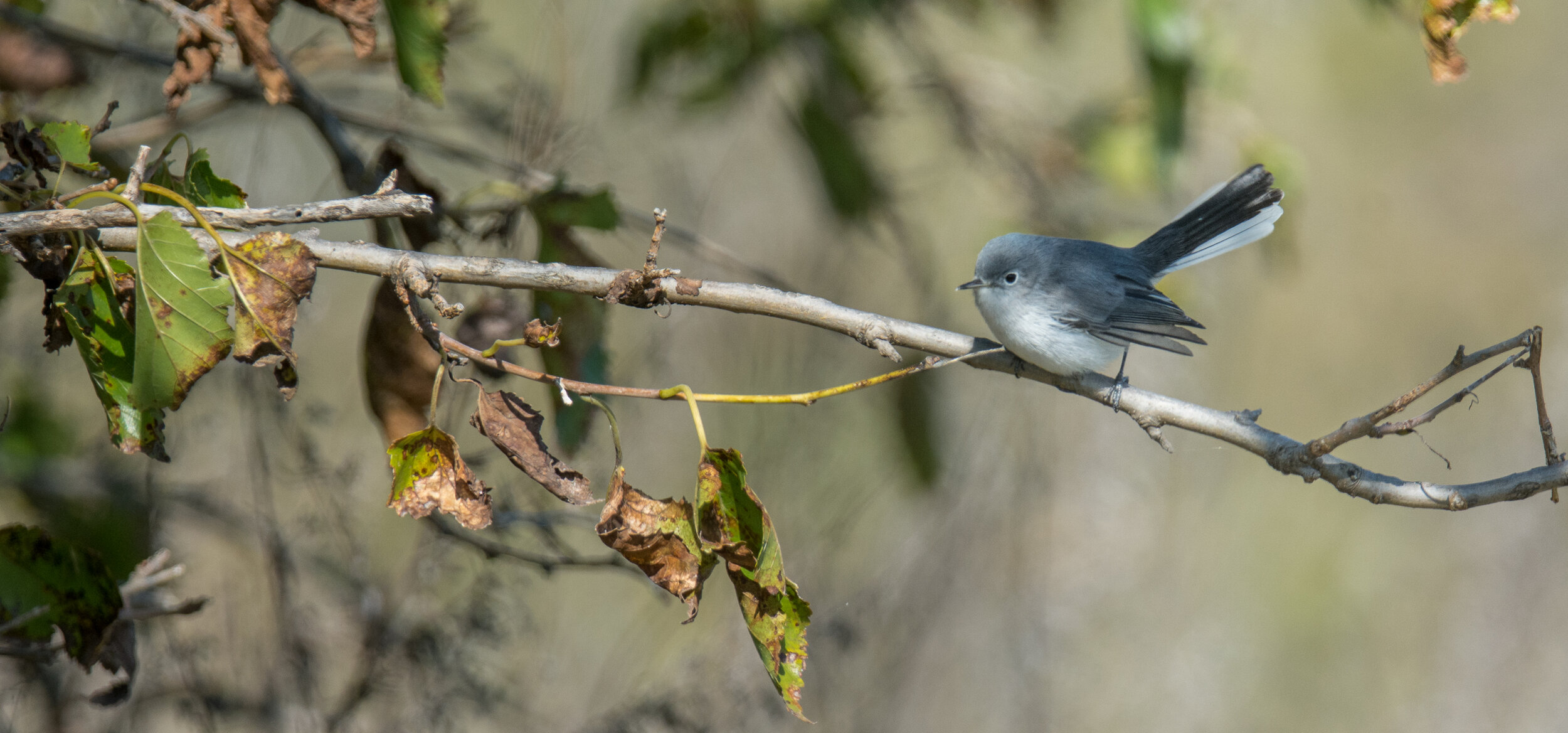Dan's Feathursday Feature: Blue-gray Gnatcatcher
When you start paying attention to birds, and want to learn enough about them to be able to enjoy them more, a pair of binoculars is definitely a necessary tool, especially for smaller birds. Those tiny balls of feathers that are little more than shapeless blobs to the naked eye, reveal stunning colors and a wide variety of plumages and styles when viewed with the aid of binoculars. Helping someone view even the most ordinary bird through binoculars for the first time is always thrilling. "Wow, I never knew a chickadee was so beautiful!"
But much can be said for the enjoyment of taking a walk naked.... You know what I mean: Leave the binoculars at home, or just let them hang on your neck, while you take in with your naked eyes--and ears--the whole scene unfolding around you.
I was on my way home yesterday from the local market, cutting through Nichols Park, when I noticed some movement in the small dogwood tree near the native plantings area of the park. I was naked-eyed, with both arms weighted down by heavy shopping bags, and my first thought was, "Dang, I wish I had my binoculars!" What a self-limiting thought that was. It's like attending a classical music concert and not being able to enjoy the performance because I don't have opera glasses and can't see the lead violin clearly. Does it matter that I can't make out the calluses on her fingertips, or see the fraying of her bowstrings as she saws away?
I stopped, and watched, and listened. Even above the noise of the city and the kids playing on the swings, I could hear a constant soft chittering, like the mouse I fed under my cot at summer camp many years ago. It did not take long to spot the bird, and I knew immediately what it was, even without any visual aids. Not because it was big and brightly colored--it was tiny, and soft blue--but because it never stopped moving. Picture a hyperactive quarter-note bounding around uncontrollably on an unlined sheet of music. It bounced from the center of the tree, out to a far-reaching branch, then flew back to the center, then sashayed along a low branch, before working its way to the top of the 10-ft tree. If I had bounced a laser pointer's beam around in those branches, I have no doubt that bird could have kept up with it. All the while, it twitched its tail left and right, up and down, like a symphony conductor, while continuing to twitter and buzz non-stop.
It was fun to watch. If I had had binoculars--or even worse, my camera--all the while I would have been cursing the bird under my breath for not sitting still long enough for me to see it clearly and get a good photo. And I would have completely missed the miracle of the tiny blue bird in the tiny tree in the tiny city park in the big city of Chicago on this beautiful spring day. But because I was "naked," I saw the bird more clearly than I had ever seen it before.
If you want to see a Blue-gray Gnatcatcher, now is a good time. They are back from South America, and before the trees and bushes leaf out they often can be seen close-by, low to the ground, bouncing around on their unlined sheets of music. They flick their tail to flush insects, which they then chase and eat. Listen for soft twitters and buzzes, and look for tiny flashes of blue, and you'll find you can enjoy the show just fine without opera glasses.
Dan's Feathursday Feature is a regular contribution to the COS blog featuring the thoughts, insights and pictures of Chicago birder, Dan Lory on birds of the Chicago region.



